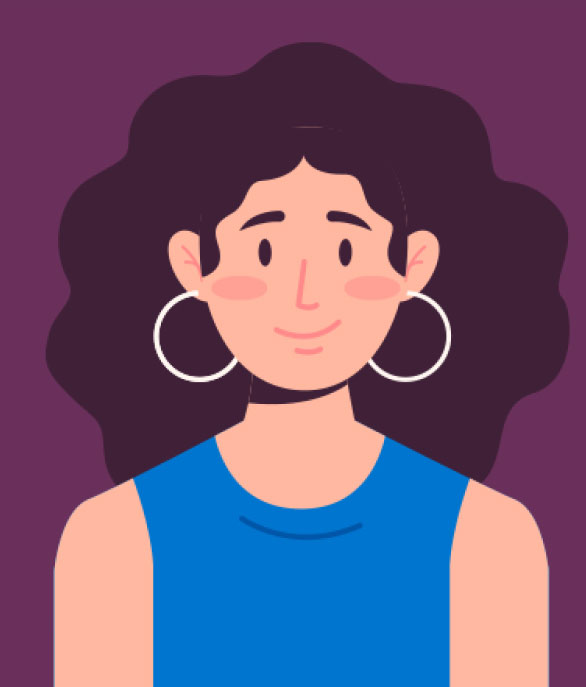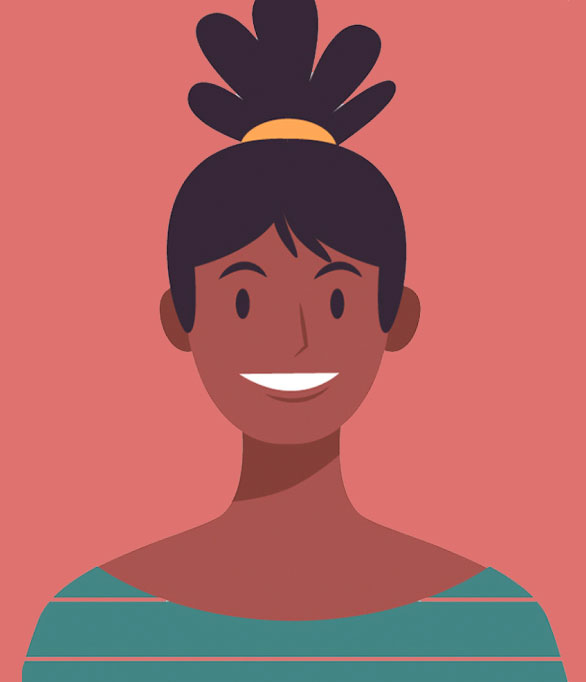In this conversation, Jill Harris discusses the dietary factors contributing to kidney stone formation, emphasizing the importance of understanding oxalate levels in foods. She provides practical advice on which high-oxalate foods to avoid and offers insights into meal planning and cooking for kidney stone prevention. The discussion highlights the balance between dietary restrictions and enjoying food, aiming to reduce anxiety around food choices for those prone to kidney stones.
Takeaways
- There are many reasons people make kidney stones.
- Oxalate is often overemphasized in kidney stone diets.
- Certain high-oxalate foods should be avoided to prevent stones.
- It’s important to maintain calcium intake to manage oxalate levels.
- Portion control is key when consuming higher oxalate foods.
- Special occasions can allow for occasional indulgences in high-oxalate foods.
- Meal planning can help manage dietary restrictions effectively.
- Cooking can be a joyful and creative outlet for those with dietary needs.
- Understanding food labels is crucial for kidney stone prevention.
- You can adapt recipes to fit your dietary preferences while preventing kidney stones.
00:00 Introduction to Kidney Stone Prevention
01:55 Understanding Oxalate and Its Impact
04:45 High Oxalate Foods to Avoid
08:02 Practical Dietary Adjustments
10:50 Cooking and Meal Planning for Kidney Stone Prevention
13:58 Encouragement and Community Support
Jeff Sarris (00:00)
You will never stop making kidney stones if you eat this.
what is holding people back from preventing stones?
Jill Harris (00:07)
there’s so many things, then there’s so many reasons that people make kidney stones. The internet just wants to tell you about oxalate, or at least that’s the thing that people focus on the most. Whenever they come to our Facebook page, the kidney stone diet with Jill Harris, it is oxalate, oxalate, oxalate. And so I will often say oxalate is the least important part of this diet.
the end. But there are really important things that you must get rid of in order to prevent kidney stones as far as oxalate is concerned. And these are the foods that we know that are the highest oxalate foods. So there’s a list of them. And I have a download on my website, High Oxalate Foods, and it’s a little PDF that you can just look at or download.
and it will have a chart of the highest oxalate foods that you really should avoid. And those foods are, and everybody knows this, spinach. Half a cup, Harvard, this is now Harvard. Harvard says half a cup of boiled spinach is 547 milligrams of oxalate. If you have a bank account, which I give people of 100, you’re already five times over it. So we need to get rid of spinach now. Now.
I have patients, this is very common, have students, patients, Facebook members, emails all the time, Jill, there were two pieces of spinach in my salad, my God, I was going for the second one and then I realized, my God, there’s some spinach in here, so am I gonna make a stone? So folks, I do wanna say this, I do want you to give up spinach because it’s just so high in oxalate, but.
If you accidentally eat a few pieces of spinach, you’re not making a kidney stone. The reason you made a kidney stone is because you were eating spinach every single day. Spinach smoothie, spinach salads, spinach in your egg, spinach all the time. And that’s why. But I still now, I want you to give it up. It’s just not worth it. Just not. Okay? So give up spinach. The other thing.
And always remember this, you’re not getting any calcium. Most of you didn’t get any calcium in your diet and that is another reason your oxalate was high. But this is about what foods are causing it as far as oxalate goes. The other thing, half a cup of rhubarb, Harvard says, is 541 milligrams of oxalate. We’re taking it away. Well Jill, I’m in the South and we have rhubarb pie. When Aunt Tracy comes, she wants her rhubarb pie. Have it once a year.
have some milk, even though that milk or whatever, that calcium source ain’t gonna lower that much oxalate. Have it once a year. Well, you just said give up spinach. Shouldn’t we just give up rhubarb? But rhubarb does come in a pie. Maybe you just wanna have that once a year. Let’s be also rational here. So yes, if you wanted a spinach salad once a year, sure, you could have it. You’re not gonna form a stone. But overall, we should be getting rid of these foods. I hope that makes sense.
Because I don’t want people saying, you’re double dipping here Jill, you’re saying get rid of something, then you’re saying we could have it when Aunt Tracy comes over for a birthday. What is it? We gotta be rational sometimes. And sometimes you’re gonna have that thing on a very special occasion. One piece of rhubarb pie is not causing a kidney stone. Please know that. And the reason I get extra cautious with things like this is because
of the fear and anxiety people come to me with. Not just to me, the Facebook page, there’s thousands and thousands of people on that page. And you can just feel the anxiety when a new member joins because they’ve just been through hell. So it makes sense. So my job is to say, yes, that food is high. It can cause kidney stones when you eat it all the time. But once a year is not causing kidney stones. So I’m here to be
to tell you what causes kidney stones, but also to lessen the fear for you, lessen the anxiety. Because people come to me, they drop 20 pounds in a month because they are really limiting themselves. It’s a real problem. It’s not me being Italian and dramatic. It’s a real problem. So although I’m going to say to the people, these are the foods when eaten in excess that can cause kidney stones, along with not getting enough calcium, it doesn’t mean you can’t have them once a year.
Okay? So, Aunt Tracy, birthday, rhubarb pie, it, stop eating it after that day. Buckwheat groats. It’s in things. It’s an ingredient. I don’t think anyone’s ever like, hey Henry, go get me a bottle of or a bowl of buckwheat groats. But people do bake with it. It’s in, it’s ingredients that are in things. And so one cup of cooked buckwheat groats is 103 milligrams of oxalate. We’re getting rid of it.
Because again, your bank account is 100. If you have had bariatric surgery or you have Crohn’s, colitis or other malabsorption issues, your bank account may be 50 milligrams of oxalate. So you’re going to be withdrawn rather with one of those things. So we get rid of it. Nobody’s going to be missing buckwheat growths. Get over it. You’re not going to be missing it. Wheat berry, one cup cooked is 98 milligrams of oxalate. Some people are eating wheat berries and
If they wanted to have half a cup, which would be half the oxalate, say about 45 milligrams of oxalate, you could have that. Have it with a calcium source, but watch your oxalate for the rest of the day. But know that one cup cooked wheat berry is 100 milligrams. I’m just rounding up. Navy beans, half a cup, almost 100 milligrams of oxalates, 96 milligrams of oxalate. Get rid of Navy beans. Why, Jill, I love them. There’s other beans you can have. Just get rid of them.
It’s not worth it. There’s other ones you can have that are very doable. Go to kidneystonediet.com. have a whole list of just Google beans and oxalate. Jill, you’ll see it. OK, now here’s one that is tricky. Baked potatoes with the skin is 92 milligrams of oxalate for a full baked potato. So I will tell patients have half.
and it’s only 45 milligrams of oxalate, okay? You can easily fit a baked potato. Those of us born in the 60s and grew up in the 70s, we like a baked potato and a sirloin steak sometimes. We went to Ponderosa, we got the buffet and that was there and it brings us back to our childhood. So have it. Some people get rid of the skin because a lot of the oxalate’s in the skin. So you can do it that way. But I tell people a potato is something that brings people a lot of joy, comfort. It’s how we grew up, a lot of us.
Have half of it. Portion, not perfection. In so many areas when it comes to diet in general. Doesn’t have to be about kidney stones. Beets, half a cup, 76 milligrams of oxalate. Jill, what are you nuts? I gotta give up beets? So I’ll say this. Half a cup is almost 80 milligrams of oxalate. So yes, maybe you wanna have a couple sprinkles of beets in your salad just to see them.
can make you happy. Taste a little bit, go on with your life, a little beet arugula goat cheese salad. Who doesn’t want that once in a while? It’s going to be about portion. I would just have a little bit goes a long way because again it’s almost 80 milligrams of oxlade for only half a cup. So I would do fourth of a cup.
It’s 40 something. And you may say, Jill, don’t want to waste 40 bucks on beets. I wouldn’t either, quite frankly. But some people love them so much. So again, we’ve got to be realistic. We’ve got to be practical in order to stay compliant long term for diets. We have to typically give people some things back that may be a little higher. Spinach, no, sorry. But maybe rhubarb pie as a special treat once a year.
beats maybe once a week. That’s where they’ll spend their oxalate bucks. Pair it with calcium, have just a couple little bits of them. Does that make sense, Jeff? You know?
Jeff Sarris (08:44)
Definitely.
Yeah. Well, and when you said buckwheat, I had to just double check because buckwheat groats are used in lot of gluten-free things too, like products, which yeah, as soon as you said that, I was like, wait a minute. And I never actually connected the two in my mind. So it’s one thing to note is again, just like we have, we’re going healthy. We’re going spinach and almond butter smoothies. It’s like, well.
Jill Harris (08:52)
Yes, thank you for bringing that up.
Right.
Jeff Sarris (09:09)
Healthy for what? Not unhealthy for this, say. And maybe going gluten free with some products, because we don’t always know if, if we don’t pay attention to everything that’s in products, we could be overdoing it on something like buckwheat and buckwheat groats that actually are now hyoxylate. We don’t even know it.
Jill Harris (09:10)
All right.
Absolutely, Jeff, and it’s an excellent point, and I’m very grateful that you brought it up because so many of the gluten-free products, if you are sensitive to gluten or if you have celiac disease, of course, you’re just looking at what says gluten-free. You’re not thinking about kidney stones if you never had them. And now you’re eating all these gluten-free products that can be high in buckwheat growth, and then the next thing you know, you have a stone. And then you find out, and you’re like, my God. And here’s what people say to themselves. Say to me, sorry.
I did this to myself, Jill. I mean, they’re so angry at themselves when they’re talking to me and I’m like, my gosh, you didn’t know what you didn’t know. It’s okay, you know, but when you’ve been through such hell and agonizing pain as people have been with kidney stones, you’re going to feel like, my God, how, and also the expense of all this, right? It’s very expensive to have a kidney stone. So, especially if you’re having surgeries and stents and hospital visits and all that.
So people are very upset with themselves, but again, I always remind people, you didn’t know what you didn’t know. Unfortunately, you had to find out this way, but it’s not your fault. So please guys, when you’re listening to these videos and you’re thinking that about yourself, because I get that on the daily, you know, people are so upset with themselves. Please don’t be, you didn’t know what you didn’t know. And then almonds is the last one that I’m like, we just take away almonds and you may say, well, Jill.
They’re 78 or 72 milligrams per one ounce, which is a couple tablespoons. And what I always say is, look, nobody’s only eating two tablespoons of almonds. They’re just not. They’re getting the bag and they’re eating half of the bag. What do I hear every day? Jill, was eating handfuls a day. So we just take them away. Now, rationally, could someone have? Have I had patients that say, listen, lady.
If I don’t see two almonds in my oatmeal, I’m going to jump out the window. I let them have the two almonds. say have the, I mean, right? We’ve got to be practical. And then you may say, well, why are you saying take them away? Because most people are going to eat too many of them. It’s just not worth it. And almond butter, it’s very high in oxalate, almond milk, all these things. They were doing all of this. Almond butter, almonds, almond milk. Everything went to almond because perhaps this person is dairy free.
So we just take away almonds and then that’s the list that we take away. There are other things that are on the higher side. You’ll have dark chocolate, one and a half ounces, 68 milligrams, cashews, 63 milligrams. I’ll often say, let’s get rid of cashews. If you can tell me though that you’re having a few of them, literally, then of course you could have them. So.
I’ve taken away from when I talk about high ox lay foods, I do say get rid of almonds and spinach. And I say almonds because people always overeat them. But I want you to pay attention folks, if you do just want to see two almonds on your plate because they make your brain super happy and that happiness lets you be compliant with everything else, then of course.
It’s for those of you, like, you know, if somebody said Cheez-Its were really high in oxalate, you know, I could not have two. I can never have two. So they’re not in my home. So know where you fall on these things. Okay? Know if a food is a trigger for you. And it’s always going to be about portion size. But the foods that I just talked about, and I think there’s about eight of them, I take them away from most people because most people want those things
all the time. I hope that makes sense.
Jeff Sarris (13:10)
yeah, definitely. And you don’t know what you don’t know. And that’s why we have kidneystonediet.com. can get a free weekly email where Jill keeps you on track. And also just quickly, the Cheez-Its.
Jill Harris (13:14)
Yes.
Jeff Sarris (13:21)
Like there are always alternatives and that’s why you make so many recipes as well. They even find on kidneystonediet.com because you made your own actual sort of high calcium version of Cheez-Its at home. So we just a little bit of everything there. You can always find that always to keep you on track and just prevent kidney stones. That’s why we’re here.
Jill Harris (13:35)
Yes.
And you know, Jeff, you made a point the other day when
we were texting and you’re like, you know, Jill, you always say they’re just recipes. They are, you’re right. I’m a little dismissive of meaning. don’t, I have to say, I work so hard on that meal plan and they are full blown meals, full blown snacks, breakfast, lunch, dinner. I mean, I work hard on that to make it balanced for you guys, to make it kidney stone diet compliant.
Jeff Sarris (13:58)
Mm-hmm.
Jill Harris (14:10)
All the oxalate, salt, sugar, calcium is figured out for each meal that I’ve made. I will say, know, Jeff has really pushed me to, you know, go with that meal plan a couple years ago. And it has brought me personally, whenever I’m feeling a little bit down, people are like, Jesus, Julie, you’re still talking. But I want to share this because it’s important. Whenever I’m feeling a little bit down, it’s important for those people.
who are like, don’t wanna cook. I never cooked my entire life. And then for the last few years, I have been for the meal plan and it has brought me so much joy. Like when I feel a little down and I swear to God on my son’s life, this is true. When I feel a little bit down or upset or whatever, I’m like, what can I make? Because it’s a creative outlet for me now. And I come up with things that I’m frigging shocked about. Let me try this, let me try that. And it was nuts.
a few years ago where if I didn’t have an ingredient, I was not making that meal. Now I’m like, I don’t have that ingredient. What else can I do? What else can I do? What else can I do? And I have amazed myself. So I say that not to toot my own horn. I say that because guys, if I can cook and make hundreds of recipes for you guys, you guys can do it too.
I’ve made all the mistakes in each of those meals. Some of those meals I’ve made 20 times to get it just right for you. And I’ve learned so much. And so many people who have done the meal plan have learned so much too. They’re like, girl, I’m making all kinds of things. They’re like, I have that meal plan. But also I have noticed I am really doing a great job with cooking and I love it. And it’s a hobby. And so that has been my greatest joy. Showing people like me that
We can cook guys and we can do all these amazing things. But the best thing about that is kidney stone formers always think there’s nothing for them to eat. And that meal plan is proof that not only are there simple and easy recipes, they’re friggin good too because this Italian lady is enjoying all of them. So you will too. And there’s something for everybody from vegans, vegetarians, gluten free, keto, paleo, you name it. You can change the recipes too so it specifically fits for you.
But I just wanted to say, if I can cook those, you can cook those. And you’ll be shocked about where you can go from just buying that dumb meal plan for a month. It’s $24, come on. You can’t beat it. You’ll get hundreds of recipes so you can get a feel for how to cook for yourself now. It’s amazing. I know I’m going off, but it’s me so much about myself at 61 years old. You know, it’s amazing.
Jeff Sarris (16:49)
Nuts.
Uh-huh.
Yeah. Yeah. And you can get a taste for it by just going to through the recipes on the site as well, because some of the meal plan, some of the recipes we have free just on the site is also just for everyone. So yeah, definitely kidneystonediet.com. And if you enjoyed this episode, give it a little thumbs up. YouTube thinks you like this video and we will see you next time.
Jill Harris (16:57)
Yeah.
And subscribe guys, help us, thank you, bye.














Leave a Reply